Hotpoint H8F HP51BS UK Bedienungsanleitung
Hotpoint
Spülmaschine
H8F HP51BS UK
Lies die bedienungsanleitung für Hotpoint H8F HP51BS UK (8 Seiten) kostenlos online; sie gehört zur Kategorie Spülmaschine. Dieses Handbuch wurde von 3 Personen als hilfreich bewertet und erhielt im Schnitt 4.7 Sterne aus 2 Bewertungen. Hast du eine Frage zu Hotpoint H8F HP51BS UK oder möchtest du andere Nutzer dieses Produkts befragen? Stelle eine Frage
Seite 1/8
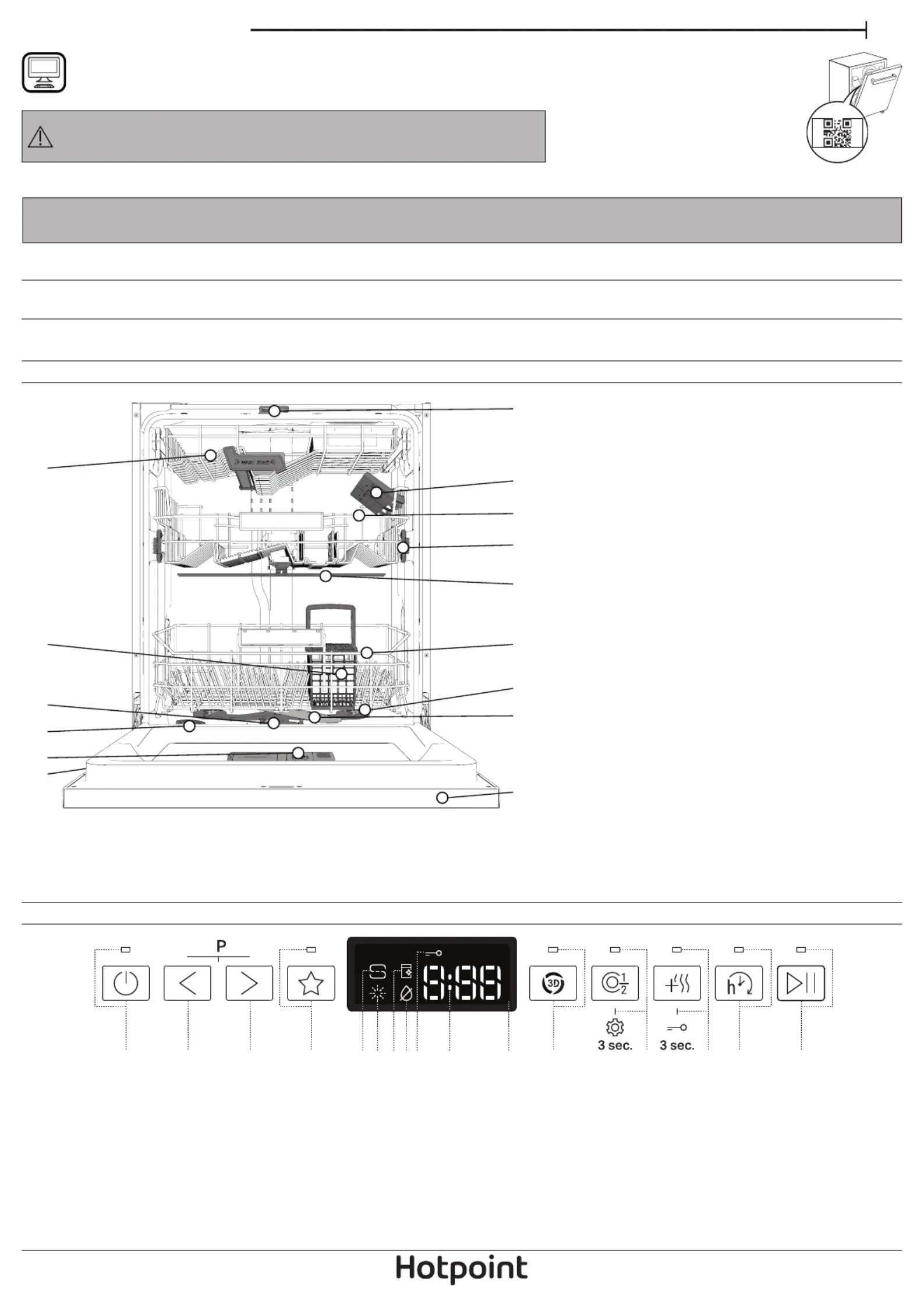
EN
Daily Reference Guide
1
THANK YOU FOR BUYING AHOTPOINT PRODUCT.
In order to receive amore complete assistance, please
register your appliance on: www.hotpoint.eu/register
PLEASE SCAN THE
QR CODE ON YOUR
APPLIANCE IN
ORDER TO HAVE
MORE DETAILED
INFORMATION
Before using the appliance carefully read Safety and Installation Instructions.
After installation, please remember to remove all transport protection parts from
the dishwasher.
APPLIANCE
PRODUCT DESCRIPTION
CONTROL PANEL
1. ON-OFF/Reset button
with indicator light
2. PREVIOUS program button
3. NEXT program button
4. FAVOURITE program button with indicator light
5. Salt reservoir empty indicator light
6. Rinse Aid reservoir empty indicator light
7. DESCALE indicator light
8. Closed Water Tap indicator light
9. Key lock indicator light
10. Program number remaining time and indicator
11. Display
12. 3D Zone Wash option button with indicator light
13. Half Load option Settings button with indicator light/ - 3 sec. press
14. Extra Dry Option button with indicator light - 3 sec. press/ Keylock
15. Delay option button with indicator light
16. START/Pause button with indicator light
The control panel of this dishwasher activates pushing by ON/OFF button.
For energy saving the control panel deactivates automatically after 10 minutes if no cycle has started.
1 2 3 4
12 13
14
15
16
11
5 6 7 8 9 10
1. ActiveDry
2. Top rack
3. Foldable aps
4. Upper rack
5. Upper rack height adjuster
6. Upper sprayer arm
7. Lower rack
8. Cutlery basket
9. 3D Zone Wash
10. Lower sprayer arm
11. Filter Assembly
12. Salt reservoir
13. Detergent and Rinse Aid dispensers
14. Rating plate
15. Control panel
1
2
3
4
5
6
7
8
9
10
11
12
13
1414
15

EN
Daily Reference Guide
2
ADVICE REGARDING THE FIRST TIME USE
After installation, remove the stoppers from the racks and the retaining
elastic elements from the upper rack.
SETTING MENU
1. Switch on the appliance by pressing the button.ON-OFF
2. Hold the Settings (Half Load ) button for 3 seconds, until you hear
a beep and the display shows „SEt”.
3. After one second the rst available setting (letter „ ”) will be displayed.
4. Press PREVIOUS /NEXT to scroll through the list of available settings
(see table below), then press START/Pause to view and change the
value of the currently selected setting.
5. Press PREVIOUS /NEXT to change the value, then press START/Pause
to save the new value and return to the main menu.
6. To change another setting, repeat points 4 and 5.
7. Press or wait 30 seconds to exit the menu.ON-OFF
LETTER
SETTING
VALUES
(Default - )*in bold
Cycle Counter - number of washing cycles
carried out by the dishwasher.
Eg. 25 cycles: 25;
Eg. 13.947 cycles:
13_947
(scrolling
for 3 times)
Water Hardness Level
(see “SETTING THE WATER HARDNESS” and “WA-
TER HARDNESS TABLE”)
1 | 2 | | 4 | 53
Rinse Aid Level
(see “ADJUSTING THE DOSAGE OF RINSE AID”)
0 | 1 | 2 | 3 | 4 | 5
ActiveDry (see “OPTIONS AND FUNCTIONS”)
“1” = On, “0” = O
1 | 0
Sound
“1” = On, “0” = O
1 | 0
Factory Settings - START/Pausepress to re-
store to the factory default all the values of the
settings included in the settings menu.
-
*) The default value does not apply to the Cycle Counter.
FILLING THE SALT RESERVOIR
The use of salt prevents the formation of LIMESCALE on
the dishes and on the machine’s functional components.
The salt reservoir is located in the lower part of the dish-
washer (under the lower rack on the left side).
• It is mandatory that the salt reservoir never be empty.
• It is important to set the water hardness.
• Salt must be lled when the SALT REFILL indicator light on the control
panel is lit.
1. Remove the lower rack and unscrew the reservoir cap (anticlockwise).
2. Position the funnel (see gure) and ll the salt reservoir right up to its
edge (approximately 0,5 kg); it is not unusual for alittle water to leak out.
3. Only the rst time you do this: ll the salt reservoir with water.
4. Remove the funnel and wipe any salt residue away from the opening.
Make sure the cap is screwed on tightly so that no detergent can get into
the container during the wash program (this could damage the water sof-
tener beyond repair).
Whenever you need to add salt, it is mandatory to complete the pro-
cedure before the beginning of the washing cycle to avoid corrosion.
Residual saline solution or grains of salt can lead to corrosion, irrep-
arably damaging the stainless steel components.
The guarantee is not applicable if faults are caused by such circumstances.
If the salt container is not lled, the water softener and the heating
element may be damaged as a result of limescale accumulation.
Using of Salt is recommended with any type of dishwasher detergent.
SETTING THE WATER HARDNESS
To allow the water softener to work in a perfect way, it is essential that the
water hardness setting is based on the actual water hardness in your house.
This information can be obtained from your local water supplier. The facto-
ry setting is “ See „WATER HARDNESS TABLE”. 3”.
Water Hardness Table
Level
°dH
German degrees
°fH
French degrees
°Clark
English degrees
1 (Soft) 0 - 6 0 - 10 0 - 7
2 (Medium) 7 - 11 11 - 20 8 - 14
3 (Average) 12 - 16 21 - 29 15 - 20
4 (Hard) 17 - 34 30 - 60 21 - 42
5 (Very hard) 35 - 50 61 - 90 43 - 62
To change, follow instructions in section “SETTING MENU”.
Only use salt that has been specically designed for dishwashers.
After the salt has been poured into the machine, the SALT REFILL indicator
light switches o.
If the salt container is not lled, the water softener and the heating
element may be damaged as a result of limescale accumulation.
Using of Salt is recommended with any type of dishwasher detergent.
WATER SOFTENING SYSTEM
Water softener automatically reduces water hardness, consequently pre-
venting scale buildup on the heater, contributing also to better cleaning ef-
ciency. This system regenerates itself with salt, therefore it is required
to rell the salt container when empty.
The frequency of regeneration depends on the water hardness level setting
- regeneration takes place once per Eco cycles with the water hardness 4-6
level set to . The regeneration process occurs at the beginning of the cycle 3
with additional fresh water.
• Single regeneration consumes ~3 L of water;
• Takes up to 5 additional minutes for the cycle;
• Consumes below 0.005kWh of energy.
A
B
FILLING THE RINSE AID DISPENSER
Rinse aid makes dish DRYING easier. The rinse aid dis-
penser Ashould be lled when the RINSE AID REFILL
indicator light in the control panel is lit.
1. Open the dispenser by pressing and pulling up B
the tab on the lid.
2. Pour in the rinse aid (max. 110 ml), making sure it
does not overow from the dispenser. If this hap-
pens, clean the spill immediately with adry cloth.
3. Press the lid down until you hear aclick to close it.
NEVER pour the rinse aid directly into the appli-
ance tub.
ADJUSTING THE DOSAGE OF RINSE AID
If you are not completely satised with the drying results, you can adjust
the quantity of rinse aid used.
To change, follow the instructions in the section “SETTING MENU”.
If the rinse aid level is set to ZERO, no rinse aid will be supplied. The LOW
RINSE AID indicator light will not be lit if you run out of rinse aid.
A maximum of levels can be set according to the dishwasher model. 6
• If you see bluish streaks on the dishes, set a low number (0-3).
• If there are drops of water or limescale marks on the dishes, set a mid-
range number (4-5).
FILLING THE DETERGENT DISPENSER
Only use detergent which has been specically designed for dishwashers.
DO NOT USE washing up liquid.
Using excessive detergent may result in foam residues remaining in
the machine after the cycle has ended.
Usage of detergent not designed for dishwashers may cause malfunc-
tion or damage to the appliance.
To achieve the best washing and drying results, the combined use of
detergent, rinse aid liquid and rened salt is required.
We recommend using detergents that do not contain phosphates or
chlorine, as these products are harmful to the environment.
Good washing results also depend on the correct amount of detergent
being used.
Exceeding the stated amount does not result in a more eective wash
and increases environmental pollution.
25 ml
35 ml
The amount can be adjusted to the soil lev-
el. In the case of normally soiled items, use
approximately either 35g (powder deter-
gent) or 35ml (liquid detergent) and addi-
tional tea spoon of detergent directly in-
side the tub. If tablets are used, one tablet
will be enough.
If the crockery is only lightly soiled or if
it has been rinsed with water before be-
ing placed in the dishwasher, reduce the
amount of detergent used accordingly (minimum 25 g/ml) e.g. skip the
powder/gel putted inside the tub.
For good washing results also follow the instructions shown on the
detergent box.
For further questions please ask the detergent producers.
FIRST TIME USE

EN
Daily Reference Guide
3
1. CHECK WATER CONNECTION
Check that the dishwasher is connected to the water supply and that
the tap is open.
2. SWITCH ON THE DISHWASHER
Press the button.ON/OFF
3. LOAD THE RACKS (see LOADING THE RACKS).
4. FILL THE DETERGENT DISPENSER
5. CHOOSE THE PROGRAM AND CUSTOMISE THE CYCLE
Select the most appropriate program in accordance with the type of
crockery and its soiling level by pressing (see PROGRAMS DESCRIPTION)
the selected button.PREVIOUS/NEXT
Select the desired options . (see OPTIONS AND FUNCTIONS)
Not all options are compatible with all programs.
6. START
Start the wash cycle by closing the door and pressing START/Pause
button (led is lit). When the program starts you hear a single beep.
7. END OF WASH CYCLE
The end of the wash cycle is indicated by sound and the display shows
END. Switch o the appliance by pressing the button and ON/OFF
opening the door.
Wait for a few minutes before removing the crockery - to avoid burns.
Unload the racks, beginning with the lower one.
The machine will switch o automatically during certain extended pe-
riods of inactivity, in order to minimise electricity consumption.
If the crockery is only lightly soiled or if it has been rinsed with water
before being placed in the dishwasher, reduce the amount of deter-
gent used accordingly.
MODIFYING A RUNNING PROGRAM
If a wrong program was selected, it is possible to change it, provided that it
has only just begun. the machine: press and hold the butRESET ON/OFF -
ton for more than 3. sec., and the machine will switch o. The dashboard
will show “0:01”. Wait until drain cycle ends (around 1 minute). Switch the
machine back on using the button and select the new wash cycle ON/OFF
and any desired options. Start the cycle by pressing the START/Pause button.
ADDING EXTRA CROCKERY
Without switching o the machine, open the door rst slightly to avoid
water splashing out (START/Pause led starts blinking) (Caution!: Hot
steam!) and place the crockery inside the dishwasher. Close the door and
press the START/Pause button, the cycle will resume from the point at
which it was interrupted.
ACCIDENTAL INTERRUPTIONS
If the door is opened during the wash cycle, or if there is a power cut, the
cycle stops. Close the door and ONLY IF YOU PRESS the START/Pause but-
ton the cycle will resume from the point at which it was interrupted.
TIPS
Before loading the baskets, remove all food residues from the crockery and
empty the glasses. You do not need to rinse beforehand under running
water. Arrange the crockery so that it is held in place rmly and does not
tip over; and arrange the containers with the openings facing downwards
and the concave/convex parts placed obliquely, thus allowing the water to
reach every surface and ow freely.
Warning: lids, handles, trays and frying pans should not prevent the spray-
er arms from rotating.
Place any small items in the cutlery basket.
Very soiled dishes and pans should be placed in the lower basket because
in this sector the water sprays are stronger and allow a higher washing per-
formance. After loading the appliance, make sure that the sprayer arms can
rotate freely.
UNSUITABLE CROCKERY
• Wooden crockery and cutlery.
• Delicately decorated glasses, artistic handicrafts and antique crockery.
Their decorations are not resistant.
• Parts in synthetic material which do not withstand high temperatures.
• Copper and tin crockery.
• Crockery soiled with ash, wax, lubricating grease or ink.
The colours of glass decorations and aluminium/silver pieces can change
and fade during the washing process. Some types of glass (e.g. crystal ob-
jects) can become opaque after a number of wash cycles too.
DAMAGE TO GLASS AND CROCKERY
• Only use glasses and porcelain guaranteed by the manufacturer as dish-
washer safe.
• Use a delicate detergent suitable for crockery
• -Collect glasses and cutlery from the dishwasher as soon as the wash cy
cle is over.
TIPS ON ENERGY SAVING
• When the household dishwasher is used according to the manufacturer’s
instructions, washing tableware in a dishwasher usually consumes
less energy and water than hand dishwashing.
• In order to maximize dishwasher eciency, it is recommended to in-
itiate the wash cycle once the dishwasher is fully loaded. Loading
the household dishwasher up to the capacity indicated by the manu-
facturer will contribute to energy and water savings. Information on
the correct loading of tableware can be found in the Loading chapter.
In case of partial loading, it is recommended to use a dedicated wash
options if available (Half load/ Zone Wash/ Multizone), lling up only
selected racks. Incorrect loading or overloading of the dishwasher may
increase resources usage (such as water, energy and time, as well as in-
crease noise level), reducing cleaning and drying performance.
• Manual pre-rinsing of tableware items leads to increased water and ener-
gy consumption and is not recommended.
HYGIENE
To avoid odour and sediment which can be accumulated in the dishwasher
please run a high-temperature program at least once a month. Use a
teaspoon of detergent and run it without loading to clean your appliance.
RESISTANCE TO FROST
If the appliance is placed in surroundings exposed to the risk of frost, it
must be drained completely. Turn o the water tap, remove the inlet and
outlet hoses, and let all the water drain away. Make sure that the water
softener is full of dissolved regeneration salt in the salt container, to
protect the appliance from temperatures of up to -20°C.
If the appliance was stored in frost conditions the appliance must remain at
an ambient temperature of min. 5°C for before the rst run. at least 24 hours
DAILY USE
ADVICE AND TIPS
D
C
To open the detergent dispenser use the
opening device C. Introduce the deter-
gent into the dry dispenser D only. Place
the amount of detergent for pre-wash-
ing directly inside the tub.
1. When measuring out the detergent refer
to the mentioned earlier information to
add the proper quantity. Inside the dis-
penser D, there are indications to help
the detergent dosing.
2. Remove detergent residues from the edges of the dispenser and close
the cover until it clicks.
3. Close the lid of the detergent dispenser by pulling it up until the closing
device is secured in place.
The detergent dispenser automatically opens up at the right time accord-
ing to the program.
Usage of detergent not designed for dishwashers may cause malfunc-
tion or damage to the appliance.
Produktspezifikationen
| Marke: | Hotpoint |
| Kategorie: | Spülmaschine |
| Modell: | H8F HP51BS UK |
Brauchst du Hilfe?
Wenn Sie Hilfe mit Hotpoint H8F HP51BS UK benötigen, stellen Sie unten eine Frage und andere Benutzer werden Ihnen antworten
Bedienungsanleitung Spülmaschine Hotpoint
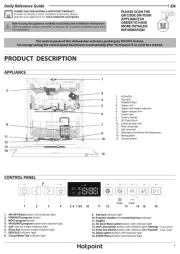
26 Juli 2025
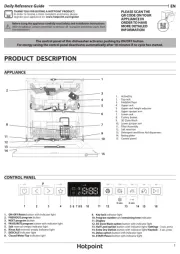
26 Juli 2025
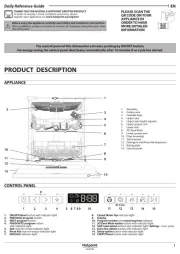
17 Juli 2025
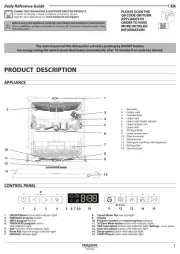
16 Juli 2025
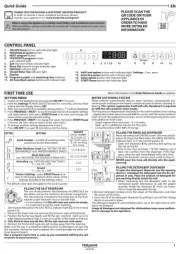
16 Juli 2025
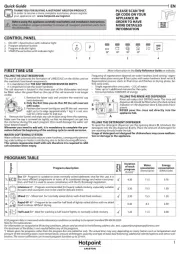
16 Juli 2025
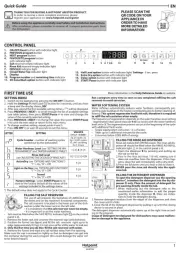
14 Juli 2025
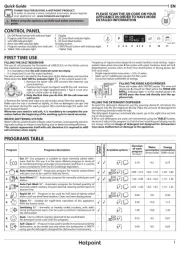
9 Juli 2025
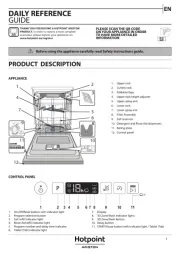
8 Juli 2025
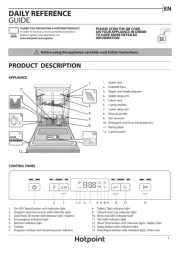
8 Juli 2025
Bedienungsanleitung Spülmaschine
- Porter & Charles
- Euro Appliances
- MACH
- Trieste
- NABO
- Insignia
- Jolly
- Novamatic
- Techwood
- Castor
- Rommer
- Constructa
- Lynx
- Vedette
- Noble Warewashing
Neueste Bedienungsanleitung für -Kategorien-
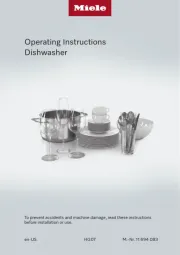
27 Juli 2025
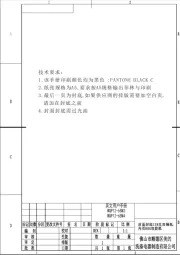
27 Juli 2025
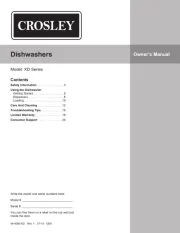
27 Juli 2025
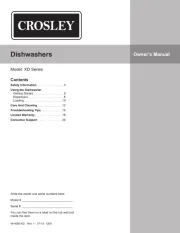
27 Juli 2025

27 Juli 2025

27 Juli 2025

27 Juli 2025
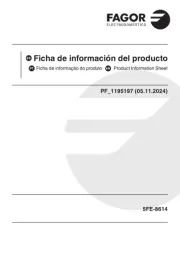
27 Juli 2025

27 Juli 2025
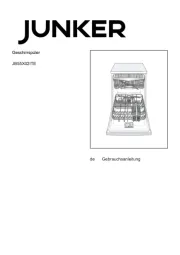
27 Juli 2025